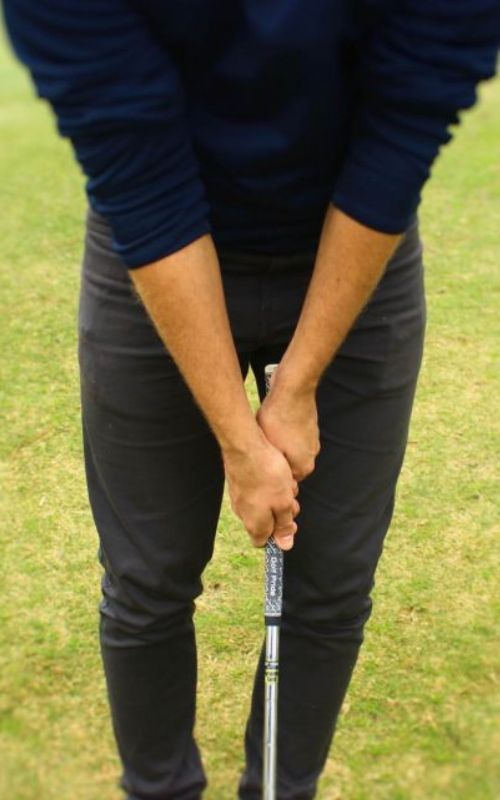
How to Hold a Golf Club for Beginners – 5 Easy Steps
How to Hold a Golf Club for Beginners
5 Easy Steps to Mastering the Golf Grip Once and for All!
How to Hold a Golf Club for Beginners forms the foundation for a successful golfing journey, and for every golf swing. In this guide, we’ll explore the five most crucial aspects of gripping a golf club for beginners. Whether you’re new to the game or looking to refine your grip, these detailed tips will set you on the path to a more controlled and confident swing.
Step 1: The Basics of the Interlocking Grip
Begin by placing your lead hand (left hand for right-handed golfers, right hand for left-handed golfers) on the club’s handle. Position the grip diagonally across the base of your fingers, creating a V-shaped gap between your thumb and forefinger. Insert the pinkie finger of your lead hand into the space between the index and middle fingers of your trail hand. This interlocking grip promotes a unified hold and enhances control.
Step 2: Proper Placement of the Hands
Achieving the correct placement of your hands is paramount when you are learning how to hold a golf club for beginners, for both control and precision reasons. The grip should run diagonally across the fingers of your lead hand, with the handle resting just beneath the heel pad. Ensure that your trail hand complements the lead hand, forming a cohesive connection. The lifeline of your trail hand should align with the thumb of your lead hand. This harmonious hand placement fosters a comfortable and secure grip.

Step 3: Maintain a Neutral Grip Pressure
Finding the right balance of grip pressure is crucial for control and flexibility. Aim for a neutral grip pressure, where you firmly hold the club without excessive tension. On a scale of 1 to 10, with 1 being the lightest and 10 the tightest, aim for a grip pressure of around 5. This allows for freedom in your wrists during the swing and enhances overall feel and responsiveness.
Step 4: Align the Clubface Squarely
When learning how to hold a golf club for beginners, achieving a square clubface at address is vital for accurate ball striking. Ensure that the leading edge of the clubface is perpendicular to the target line. The back of your lead hand (left hand for right-handed golfers, right hand for left-handed golfers) should align with the clubface. This square alignment sets the foundation for consistent shots and minimizes the risk of slices or hooks.
Step 5: Consider Your Finger Positions
Pay attention to the positioning of your fingers to optimize grip stability. The fingers of your lead hand should securely wrap around the grip, with the fingertips making contact. The trail hand’s fingers should wrap around the lead hand’s fingers, ensuring a secure connection. Avoid letting the club rest too much in the palm of your hands, as this may lead to a less stable grip.
Ready to Take the Next Step? ⛳️
If you’re eager to dive deeper into golf’s intriguing world and master the ins and outs of the game, look no further than our “Golf For Beginners – The Ultimate Starter Guide.” Whether you’re a newbie or just brushing up on your skills, this online course has something for everyone.
⛳️ Discover the Ultimate Golf Starter Guide Right Here ⛳️
Conclusion on How to Hold a Golf Club for Beginners
Congratulations! You’ve explored the five most important aspects of holding a golf club for beginners. Consistent practice and mindful application of these gripping techniques will undoubtedly enhance your control and confidence on the course. Golf For Beginners Academy is here to support you on your journey to mastering the art of the golf grip. Incorporate these tips into your practice routine, focus on refining your hold, and experience the improvement in your overall swing. Grip it right and swing with confidence!
If you want more detailed help with you game of golf, and specifically about the short game of golf, our partner-portal called World Of Short Game deliver great content for all short game related topics. Click here to visit World Of Short Game.
And if you live in Denmark, never hesitated to reach out to Danish Golf Academy for help with any part of your game.
Recent Comments
Copyright @ 2024 - Golf For Beginners Academy

